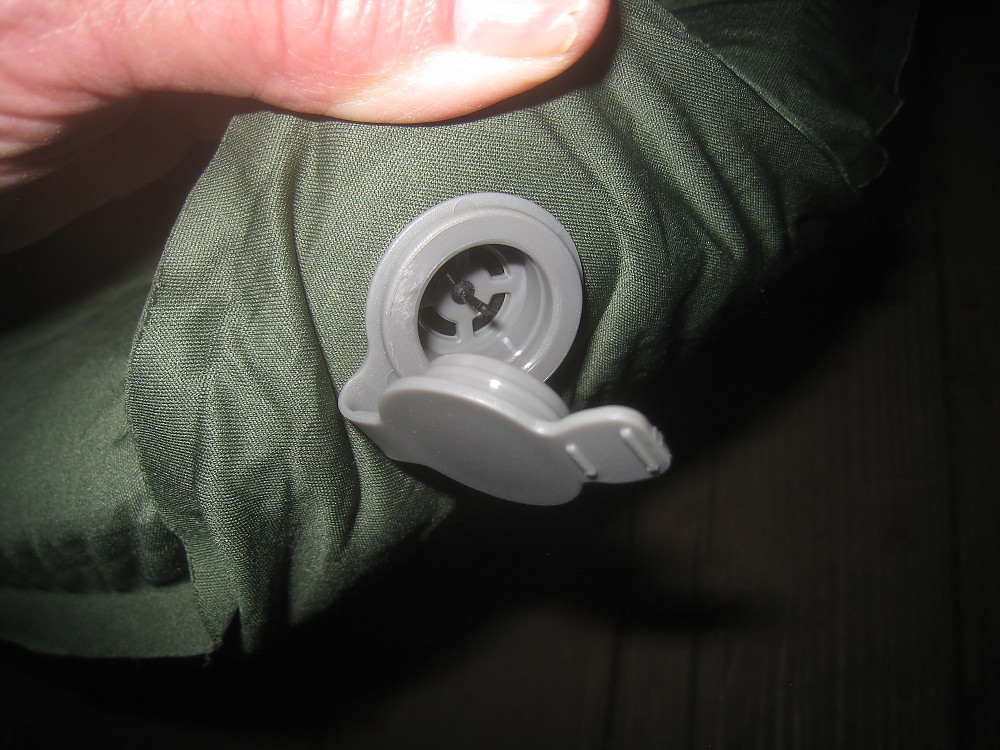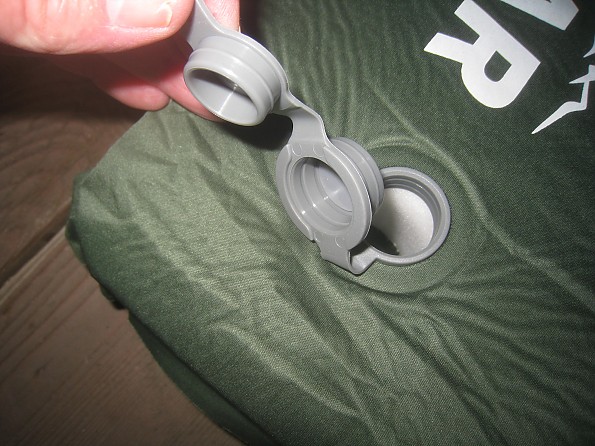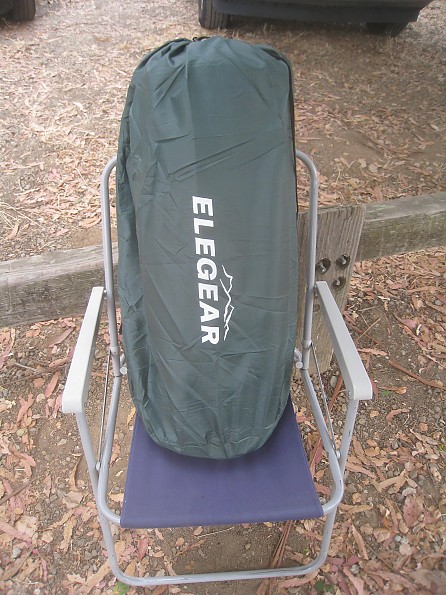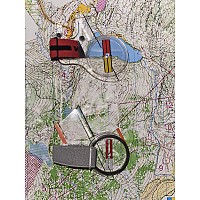Elegear 3.1" Self-Inflating Sleeping Pad

I rate it 5 for car camping sleeping comfort, which is worth 98% of the rating. There are a couple of minor design considerations that keep me from giving it a perfect rating.
Pros
- Great sleeping comfort
- Fast auto-fill
- One-way deflation valves
- Hands-free carry sack
- High value
Cons
- Too-small pillow
- 5 valves
- Valves on wrong end
- Pillow increases roll up effort
This review evaluates Elegear's Self Inflating Sleeping Pad, 3.1-inch Ultra-Thick Memory Foam Camping Pad. I see the product as most applicable to car camping, and that is the context for this review. The reviewed pad may differ in some respects from production shown on the website.

The simplified description would be a dense slab with no cut-outs enveloped in a synthetic shell that auto-fills when valves are opened to allow the slab to decompress. I'm used to a dense memory foam topper at home, and find this pad every bit as comfortable. I prefer firm support, but enjoy sinking in so that all the curves and bumps get the same attention. Of course a camper also wants the ground bumps and divots evened out.
Attending instructions indicated that the mattress might take as much as half an hour to fill the first time, having been compressed to its tiniest in shrink wrap for shipping. I let it out at home to make sure all was good before venturing into the semi-wild. I lost track of the timer because I didn't watch it, thinking I'd have a while, so I don't know how long the first fill took (insignificant matter anyway). I did keep an eye on two subsequent fills. Directions say 20-30 seconds, and while I don't know how to tell the exact moment the fill is done, it was a half-minute or less. The firmness of the foam slab and the gaping maws of the two inlet ports fill the mattress in little more than the blink of an eye.

The foam slab is dense enough and thick enough that it very nearly supports my 180 pounds by itself—meaning with the valves open. I found the best level of comfort had me letting air out on the first of two nights. However, the temperature went from hot when initially filled to rather chilly during the night, and the air shrunk enough the point of my hip could touch the ground while side-sleeping. That brought to mind the suggestion that the fill ports might better be located at the head-end rather than foot-end for any needed adjustments.
Shell fabric is goldilocks, being not too slick that it squirts the body off; nor too sticky for the body to squirm around. Although the tent pad was slightly off-level in both aspects, I was still able to sleep very comfortably in the pad's warm embrace. With so much width, my elbows were never on the ground whenever I rolled onto my back (an issue with narrower mattresses on snow). I slept under a down blanket in a single bottom layer and double top layer. The shell always felt warm, but not so warm that I felt any dampness.
The manufacturer claims an R-Value of 9.5. I don't know how to measure that, but it never felt hot on warm ground or cold during the night. I was also surprised that the slightly textured shell did not magnetize the litter that always seems to find its way inside the tent. It brushed off easily; and even a renegade down feather did not stick.
The Elegear website indicates a waterproof layer between breathable shell and the slab. I did not have occasion to paddle around the lake in this testing.
The pillow bump isn't large enough to eliminate need for a supplement or even contribute much. It does exacerbate the difficulty of getting the mattress roll started. I'd think better would be not to have it, or to make it large enough not to need a supplement. The latter circumstance would suggest a second reason to place the valves at the pillow end. I measure a pillow bump of 1 and 3/16 inches--not much in pillow talk. The website illustration seems a rather generous exaggeration of what I experienced and I should have paid more attention to my numbers than the picture. I should have brought a pillow and saved the indignity of having to compromise mindless relaxation by having to improvise additional head support.
I have used other thick mattresses and find challenge in rolling any, perhaps in no small part due to my old friend Arthur Itis. My stubby fingers with the help of a knee got the pad rolled to 10 inches in diameter on 2nd roll, as suggested by the instructions. I'm not partial to doing the task twice, even with the second roll being much easier. On subsequent tries I managed a tidy roll in one effort and consistently under two minutes. Applying my strongest grip, I can curl the pillow end to start a roll, then mash it along with a knee. The one-way valves let a camper take a breath if needed, without losing ground to air sucking back in; a substantially beneficial innovation.

For as big as the inflated pad is, it can be coaxed into a manageable package. I have no trouble getting the provided elastic retention straps over the bundle; and then slipping it into the carry sack. The strap is long enough I can sling the mattress over a shoulder like a quiver and have hands free to carry other stuff from car to tent.

Five valve interfaces makes me nervous. The mattress fills itself fully and quickly through the two top valves. I would suggest one port would be sufficient, even at the cost of a few seconds longer to fill and roll up. The end valve does make for a readily available powered inflation port, but even my Type A can wait the few seconds it takes for the pad to fill on its own. Any more air than volunteers is going to detract from the pad's sleeping comfort, so I don't see the need for a forced-air port. Instructions indicate the port can be used to mitigate slow recovery in cold weather or after long storage.

I much prefer foam-filled pads over all-air. The latter are of course much lighter and pack much smaller. I don't sleep as well on them, and for car camping the weight-space metrics don't apply. All-air pads are often much noisier as the sleeper thrashes about, some reaching levels downright obnoxious. Foam pads can be very quiet. Quiet like this pad contributes to better sleep, not to mention no complaints from neighbors.
This pad resides in the lower end of the cost spectrum at $79.99. Warranty period is one year, though precisely what it covers is not explained beyond wanting to keep the customer happy. Comes in green only. Very thorough description at elegear.shop.
Care instructions are damp wipe, no strong detergent. Store dry and completely empty. Instructions reference the possibility of slow-fill after long period of non use, so I interpret the 'empty' advice to mean fully compressed. Tightly stuffed does conflict with my gear ethic of 'I'll be as kind to you as possible and you don't let me down out there'. If there's a product-performance reason to store it tightly stuffed, perhaps that could be noted.
Dimensions: I measure the pad (not including seam extension, and auto-fill only) at 76-5/8" x 26-1/2" x 3" inches, with a pillow bump adding 1-3/16".
Weight:
Mattress = 7 lb 9-1/8 oz
Straps = 1/2 oz
Bag = 2-5/8 oz
Total = 7 lb 12-1/4 oz
Manufacturer invited this review in exchange for the product; and did not request or receive a preview.
Background
Two nights with this product. Probably 1,500 nights with a dozen or so other sleeping pad products over 50 years.
Source: tested or reviewed it for the manufacturer (kept it)





